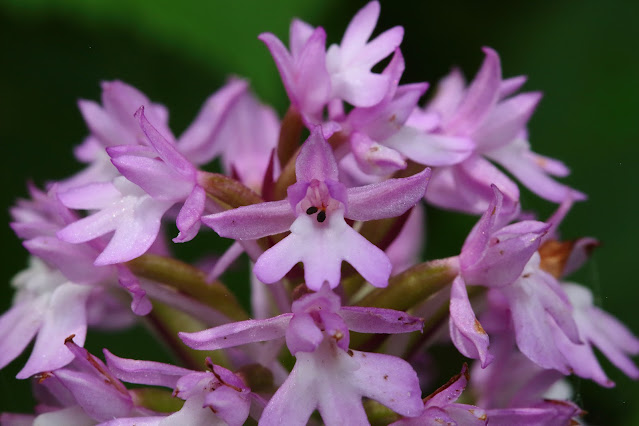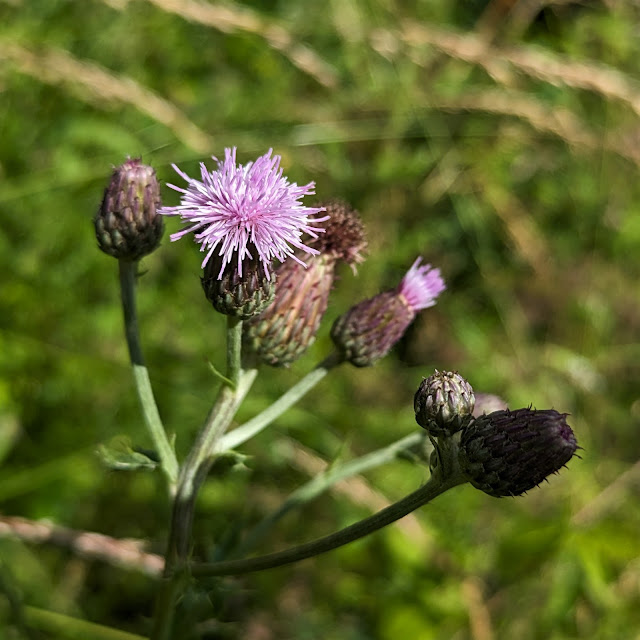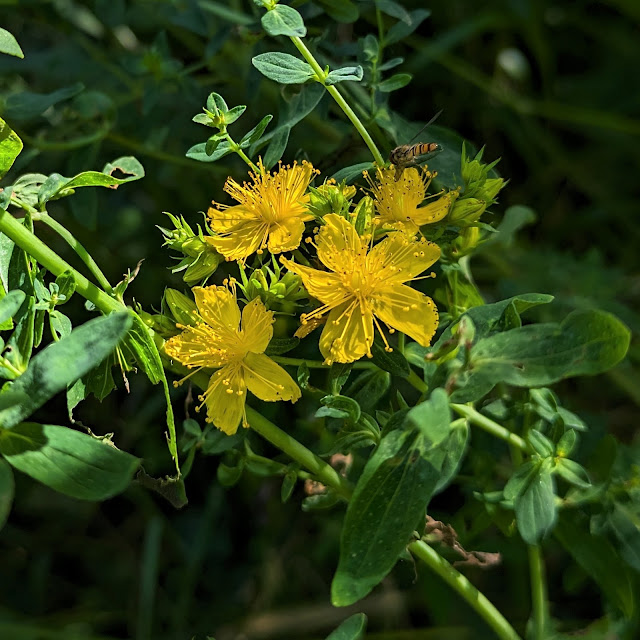10th July 2023 - walking along the Old Railway Cutting recently, Andy M was struck by the amazing number of wildflower species in flower, possibly due to the cooler, wetter summer than last year.
Using his phone took photos of many of them to help identification back home. Interestingly, amongst the species was a Pyramidal Orchid in flower - not a species he had seen along there before.
Pyramidal Orchid
Pyramidal Orchid
Closeup of Pyramidal Orchid flower
Mullein
Mullein
Wild Basil
Wild Marjoram
Hop Trefoil
Bird's-foot Trefoil
Bramble
Yellow Mignonette
Field Poppy
Wild Carrot
Ragwort
Oxeye Daisy
Spear Thistle
Old Man's Beard
Common Agrimony
Common Selfheal
Dove's-foot Cranesbill
Common Centaury
Smooth Hawkweed
Seedhead of Goatsbeard
Hedge Bedstraw
Smooth Hawksbeard
Wild Parsnip, and an Ichneumon wasp
Common Mallow
Field Scabious
Field Scabious
Hedge Bindweed, climbing up Common Nettle
Hedge Bindweed
Field Bindweed
A good stand of Creeping Thistle - which the butterflies were very much enjoying
Creeping Thistle
Creeping Thistle
Perforate St John's Wort




































No comments:
Post a Comment